Retired professor Ed Lehner is a luthier, musician, and Reiki master who also finds time to journal and write poetry and short stories. In 2017, he added novelist to his list of accomplishments with the release of San Juan Sunrise. His second novel, The Awakening of Russell Henderson (2018), explores a journey of failure, depression, self-discovery, and love. You’ll find Ed on Facebook and Twitter, and on his website ELehner.com.
 What is your elevator pitch for The Awakening of Russell Henderson?
What is your elevator pitch for The Awakening of Russell Henderson?
Chicago investment-banker Russell Henderson — newly divorced, suffering from depression, his structured life falling apart — makes a spur-of-the-moment decision to go on a camping trip to explore the Western United States. On the second day of his trip, he picks up a woman hitchhiker in western Iowa. This sets off a chain of events that involve an American Indian sweat lodge, a Tibetan Buddhist Rinpoche, and a road trip through stunning countryside. His relationship with the woman becomes more complex, especially when the dark secret of her past comes into play.
When readers turn the last page of the book, what do you hope they will take away from it?
I hope the reader will feel uplifted. I would hope, along with the story itself, readers might come away with new insights into the struggles in their own lives or those of others.
What unique challenges did this work pose for you?
This being only my second book, it is hard to pick out any unique challenges. Writing a novel, for me with my lack of experience, was the main challenge. But I would have to say, describing the sweat lodge and creating the Rinpoche (from a number of Tibetan teachers I have had over the years) and giving them both due respect was probably the hardest. Originally, I was not going to include the sweat, but finally felt it was a necessary part of the story.
Tell us how the book came together.
When my wife and I lived in Iowa, we usually spent three weeks of every summer camping out west, visiting national parks, exploring and hiking, mainly in the Dakotas, Montana, Wyoming, and Idaho. Along the way I met some great folks, some being Ogallala Sioux from the Rosebud Reservation in South Dakota where I experienced my first sweat lodge. Also I have studied Buddhism for thirty years.
With teaching relatively small studio labs in design when I was at Iowa State University, I got to know most of my students fairly well along with their struggles, fears, their self-criticism of not being good enough, not creative enough among other things. I kept journals of these encounters along with my teaching experiences, and, for the most part, many of my students created Russell Henderson.
Also, the first book I wrote, San Juan Sunrise, dealt with childhood abuse and recovery. I found digging into abused and damaged individuals, and their subsequent recovery, rewarding. For The Awakening, I wanted to write a road-trip book to include some of my adventures and the places I had visited. I added a spiritual growth aspect, and it all fell together. I first had the idea to write the book in 2016 and fooled around with it, but didn’t begin to seriously write it until January of 2018. I sent the manuscript to the editor at the end of July 2018, and it was published by the end of November that year.
Who is your main character, and why will readers connect with him?
Russell Henderson might be anyone…anyone who is feeling trapped and wants to break free of the influences of their upbringing, their familial and societal expectations. Somebody who is suddenly confronted by the confines of their present life and is facing the necessity to have to change, especially when they realize there are no roadmaps.
When did you know you had taken the manuscript as far as it could go?
I felt Russell’s relationship with Hanna, the hitchhiker, was fully developed, but it wasn’t until he had complete closure with his family secrets which were revealed after an event that called him back to his family home in Iowa.
What was your favorite part of putting this project together?
It was fun to share some of my own experiences. I am a closet romantic, so I had to include a love interest and found the opposite personalities of uptight Russell and free-spirited Hanna interesting to develop and work with.
 When did you know you wanted to be a writer?
When did you know you wanted to be a writer?
I never knew exactly if or when I really wanted to be a writer. I’ve written quite a bit about my struggles with creativity on my blog. I began to write poetry after discovering Robert Frost in a literature class in junior college. I always had an urge to create but was drawn to the visual arts and ended up as a professor of graphic design. Also, I journaled and continued to intermittently write poetry for many years. Around 2012, I began writing poetry more regularly and attempted some short stories about the same time. Prose was a different animal to me, however, and thoughts about me ever writing a novel never entered my mind. San Juan Sunrise came quite unexpectedly when I was recovering from pneumonia in 2015. The book started as a poem which morphed into a short story and just kept going and growing until I had to bring it to a close around 90,000 words. I was quite surprised. The Awakening of Russell Henderson was intentional as a novel. Once I started, it was a great road trip.
Your writing takes several forms – poetry, short stories, novels. Is there one form you’re drawn to the most when you write or read?
Poetry and short stories are my favorites to write. They are obviously quite different, mainly much faster and more immediate from doing a full-blown novel but, nonetheless, have their own challenges of creating a full story, or a feeling, with only a few words.
How has the creativity and discipline you employ as a musician (or music itself) helped you in your writing journey?
I must say I have never been a dedicated or disciplined musician. But I find rhythm in poetry as well as prose to be the same as music in many ways. I see rhythms in the sentence, paragraph, chapter, the rise and fall of the plot or the protagonist that can be inherent in either a folk song or a symphony.
What are your hobbies or creative outlets?
I am a luthier and repair stringed instruments, mainly for the B Frank Foundation in Bayfield, Colorado that has around 500 instruments they put into the hands of any child who wants to learn music, along with offering lessons and orchestra. I also like being in the mountains, four-wheeling or hiking. I do still hang out with my guitar and mandolin quite a bit. Also, of late, I have been messing around with doing some photography again. Being a designer, I look for patterns and the interactions, anomalies, and details that sometimes occur that may be easily overlooked. I try to capture these images that I consider to be abstractions of our common visual sense. I think I also see these same concepts in my writing to some degree.
Who are your favorite authors, and what do you admire most about their writing?
Renée Vivian for her beautiful poetry. Henry Miller for his writing style. Ernest Hemingway for his writing style, characters, and stories. Marc Levy for his gentle and sometimes surrealistic stories. Nina George for her delightful stories set mostly in Paris, my most favorite city. Anne Hillerman for continuing her father’s legacy of stories about the Navajo people in and around the area where I live. Kerry Greenwood for her Miss Fisher series on which I am totally hooked. I am also reading SouthWest Writers authors and have liked a number of the books I have read. There are so many other great authors that have influenced both the vocabulary of my visual world as well as my writing world.
Do you have a message or a theme that recurs in your writing?
I hope I project the idea of hope and possibilities of personal growth and/or healing, despite the real or perceived roadblocks that can be frightening and overwhelming.
What is the best encouragement or advice you’ve received in your writing journey?
The first encouragement came from my wife after she read my first draft of San Juan Sunrise. She thought it was a good story and that I should try to get it published. I had several other readers look at the manuscript who also thought it was a worthy story that should be out there. The same held true with The Awakening. Then my short story “The Anchor” was awarded second place in the Support Indie Authors contest, which gave me some nice validation for my efforts.
What writing projects are you working on now?
I have been writing short stories. I also have the sequel to San Juan Sunrise in the works and am working to bring it (slowly) to fruition.
Is there anything else you would like readers to know?
I have struggled most of my life with creative expression, and it wasn’t until I had some aha moments of self-discovery that I could finally feel the freedom to both design and write. My twenty-part memoir of my road to creative freedom is on my blog, www.elehner.com. Just go to August 2020 and scroll down to the beginning.
 KL Wagoner (writing as Cate Macabe) is the author of This New Mountain: a memoir of AJ Jackson, private investigator, repossessor, and grandmother. Kathy posts to a speculative fiction blog at klwagoner.com and writes about memoir at ThisNewMountain.com.
KL Wagoner (writing as Cate Macabe) is the author of This New Mountain: a memoir of AJ Jackson, private investigator, repossessor, and grandmother. Kathy posts to a speculative fiction blog at klwagoner.com and writes about memoir at ThisNewMountain.com.


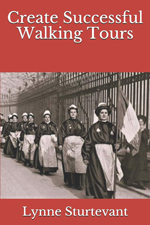
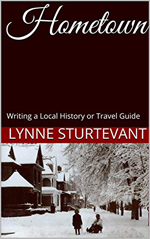
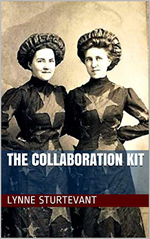








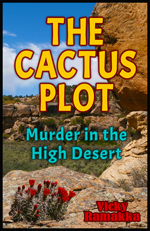
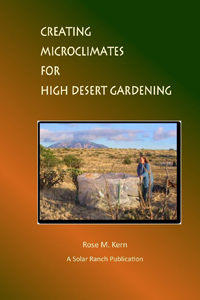
 How did the book come together?
How did the book come together?




























